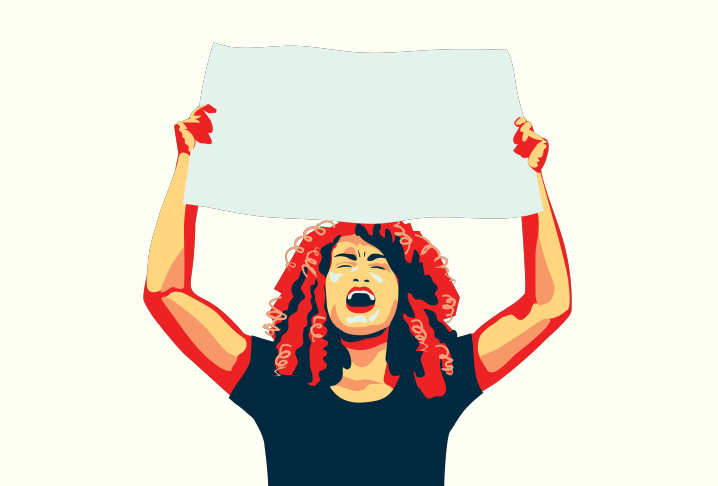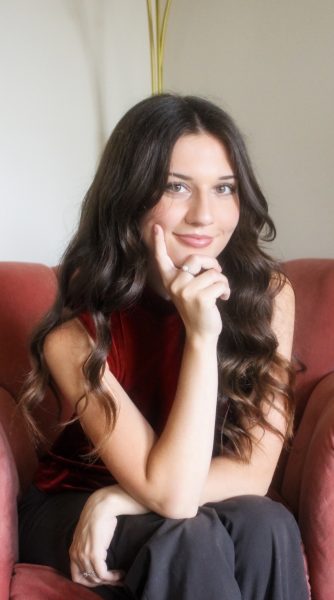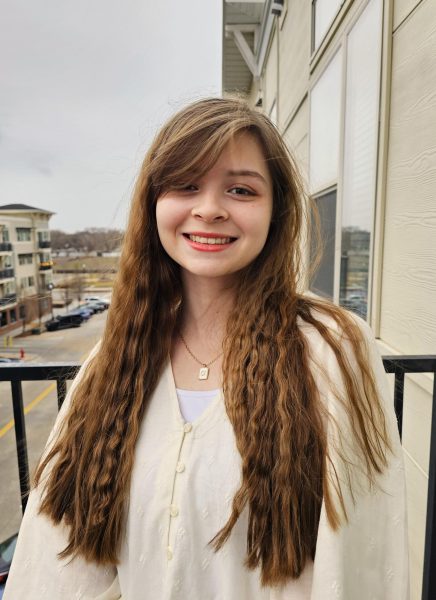Student protests are not new. While there has been scrutiny for free speech violations this year, this is not the first time the administration at the University of Utah has pushed back against demonstrations.
From walk-outs, sit-ins, marches and rallies to flyer posting and social media activism, U students have a long history of being involved in social justice.
War, Genocide and Foreign Policy
One of the most notable demonstrations that took place on campus were the protests against the United States’ involvement in the Vietnam War. These protests came to the U around 1968, and continued until U.S. troops left Vietnam in 1973.
According to the J. Willard Marriott Library’s digital archives, tension peaked in May 1970 after the invasion of Cambodia and the incident at Kent State University in which the Ohio National Guard fired into a crowd of protestors, killing four students.
According to a brochure advertising the protests on May 5 and 6, 1970, the goals of the protestors were to achieve the “withdrawal of all American armed forces from Southeast Asia immediately,” to gain “non-restricted speech freedom,” to end the “murder and repression of Panthers” and the “freedom of political prisoners & war protestors.”
During the strike, student protestors rioted, disrupted classes, occupied the Daily Utah Chronicle offices and fire-bombed the ROTC. Four thousand students met outside of the Union for the rally. Eight hundred students marched to the Park Building and occupied it, with some being arrested.
On May 7, 1970, 81 students were arrested after refusing to leave a sit-in outside administration offices which drew hundreds of students in attendance.
In 1995, U students similarly protested the Chinese occupation of Tibet. China took over Tibet in 1950, engaging in “cultural genocide” and “colonization,” according to one student organizer.
Pema Chagozoetsang, who organized the protest, said in a Chronicle article published in October 1995 that the purpose of the march was “to increase awareness to the crimes and the genocide that are taking place in Tibet.”
“A genocide is being perpetrated in Tibet,” Chagozoetsang said. “Tibet has a population of six million, 1.2 million of which are unaccounted for. They’ve either been killed off or imprisoned.”
In 1986, students joined together to protest South African apartheid. The Students Against Apartheid club set up “shanties,” wooden hut-like structures, near the Union.
The Chronicle’s editorial board, two other anti-apartheid groups and the shanty students openly called for the U to divest itself from South Africa and withdraw from investing funds into companies that conduct business there, according to a Chronicle article in the Marriott Library’s Special Collections. Both ASUU presidential finalists also called for divestment.
The shanty put up behind the Union was met by more shanties, forming a “shantytown” according to organizer Spence Hammond. One student protester claimed that the plan was to “build one shanty a week until school officials agree to divestiture.”
The demonstration escalated when campus police were called to the scene over a firebomb being thrown at the shanties.
“The incident occurred about 1:00 a.m. when someone tossed a soft-drink bottle filled with flammable liquid at the shanties,” said Wayne Shepard, police chief at the time, in a 1986 Deseret News article found in Special Collections at the Marriott Library. None of the students staying in the shanties were injured.
The protests against apartheid on campus were highly controversial, involving chants, posters, fliers, demonstrations and physical structures being built. There were students who opposed the anti-apartheid protests and vandalized the shanties or built their own shanties in response, according to articles in the Marriott Library’s Special Collections.
Racial Minority Rights
Chicano-identifying students have historic disadvantages in higher education. An article published in the Chronicle in December 1970 said “the Chicano community has the highest unemployment, dropout, criminal rates and worst housing per capita.” According to another article published the same month, the U had only 120 Chicano students out of their 22,000 student population.
In a Chronicle article published in April 1987, Renee Jimenez, president of the U’s Chicano Student Association, said Chicano students “were able to accomplish group goals and increase the enrollment of Chicano students at the U” through their “protests and demonstrations.”
Other protests came about in response to race-based discrimination against Black students at the U. In a Chronicle article published in April 1989, Ronald Coleman, who was director of Black Studies at the time and former football player for the Utes, discussed the impact of the civil rights movement on his work.
Coleman said Charles Nabors, who was faculty at the College of Medicine and the first Black faculty member at the U, was a “heroic figure” who helped “organize some of the local protests.”
As a Black student, Coleman recalled “experienc[ing] racism and bigotry.” He said these protests were “a response to housing discrimination” that brought attention to “the extent of racism and discrimination here.” He shared that he along with other Black football players struggled to find off-campus apartments, being denied repeatedly due to their race.
The Black Student Union on campus at the time “supported boycotts, sit-ins and anti-war rallies.”
Black students and faculty also joined in to “protest racism within the LDS church.” Students opposed the Church of Jesus Christ of Latter-day Saints’ silence on the topic of civil rights and lack of support for the Black community, as well as the church doctrine stating that the “dark skin” of African Americans was a “curse” on the Lamanites set upon them for being evil.
Coleman emphasized the Black community’s involvement in civil rights protests, marches, boycotts and more laid the foundation for later social activism protests — like women’s liberation, gay rights and more.
Faculty Reactions
In 1966, Dean of Students Virginia Frobes spoke “strongly in favor” of student demonstrations.
“Because of our successful student-administrative communications, I do not see the possibility of University demonstrations and rallies getting so far out of hand that they need to be restricted,” she said.
Frobes said both facilitating communications for settlement and “mass demonstrations” are important, and believed the “deeper motives … are sincere attempts of students to solve problems.”
Just one year earlier, Robert McKay, who was associate dean of the law school at New York University, spoke to U students about the importance of protesting during his seminar.
“Civil disobedience, in some instances, is not only justifiable, but also mandatory in a democratic society,” McKay said.
In response to the call for Chicano rights, one Chicano professor in political science at the U called for action to be taken to support the cause.
“In the absence of money, the only thing poor people have is the power to organize,” Armando Navarro said in a Chronicle article from 1974.
A political advocate in college, Navarro brought this activism to the U by teaching courses on “Protest Movements in the United States, Chicano Politics and Politics of Revolution in Latin America.”
Today, some U faculty members have spoken in support of student group Mecha after the group lost their university sponsorship. In December 2023, over 70 staff members signed a letter to U President Taylor Randall stating that they “advocate for the immediate reinstatement of Mecha’s funding.”
The signed faculty also “condemn the actions of university police” who charged students for their involvement in “nonviolent protests,” and call for them to drop the charges against club members.
Mecha organized two protests in support of Palestine in October and November 2023, as well as a protest of an anti-trans movie screening organized by the Young Americans for Freedom.
Protests Effects, Accomplishments and Outcomes
Student demonstrations at the U have drawn broader commentary. Following campus protests in 1966, Utah’s Secretary of State Clyde Miller said “students have the right to protests when they are of a constructive nature.”
“Protests do a great deal of good because they bring to a head misunderstandings which can then be solved,” Miller said in a Chronicle article from 1966.
The Chicano protests of the 1960s and 1970s led to higher Chicano enrollment at the U, the establishment of Chicano Awareness Week, funding and scholarships dedicated to Chicano students and a higher percentage of Chicano faculty.
In a Chronicle article from 1972, Mike Melendez, the Chicano student advisor in the Minorities Center at the time, reported that the number of Chicano students at the U had increased from 25 to 325 in three years. He attributed this increase to “a concerted campaign to recruit and retain Chicano students from across the state,” especially through conferences and workshops with high school students.
The large-scale protests calling for U.S. withdrawal from Vietnam resulted in the U transforming campus to hinder similar demonstrations in the future. The previously flat and open space behind the Union was changed to rolling hills with dense trees, supposedly to deter the public from gathering there.
Following student protests against South African apartheid, the U’s institutional council passed a resolution opposing apartheid, according to a Deseret News article from 1986 in the Marriott Library’s Special Collections. This council did not halt all investments into companies in South Africa, but it did state that the companies they continued to invest in were “making good progress” under the Sullivan Principles, making it “acceptable for university investment.”





John Hedberg • Feb 9, 2024 at 12:56 pm
How many articles promoting Marxist-Equity “Useful idiots” activism is The Chronic going to push on us? Every week? Is there ever a diverse point of view included?
Just to reiterate again :
:
Glenn Loury and John McWhorter (professors at Brown and Columbia: McWhorter also writes for the NY Times) had an interesting conversation recently on YouTube’s “The Glenn Show” titled “The Truth About George Floyd’s Death”. It turns out that the activists were spreading misinformation: George Floyd wasn’t murdered. Oops!
Democracy is the idea that we don’t need to become lifelong activists to bring about change, you just need to argue specific issues to the point where people are willing to vote for your solution. It’s the penchant of activists not to wait for emerging data to tell the whole story before coming to faulty conclusions based on incorrect assumptions (hypotheses). In this case, the BLM riots caused the death of more than a dozen innocent human beings, many of them BIPOC, because of a murder that wasn’t a murder, as horrific as it was.
Democracy isn’t based on activism but persuasion and reason, science which is based on evidence that emerges and conclusions which change over time, so was it worth the death of more than a dozen innocent people, many of whom were BIPOC, to protest a horrific death which it turns out wasn’t murder now that the facts are better known?
If you’re a true student of human rights and care about people of all stripes, watch “The Truth about George Floyd’s Death | Glenn Loury & John McWhorter | The Glenn Show” posted a few weeks ago. There’s also a documentary that’s got data that never made it into the trials of the police officers.
Speaking personally, as an intersectional BIPOC undergraduate here at the U, I don’t need your “activism” to succeed or to feel like a real person (I almost added “Pend*jo”, but you wouldn’t know I was only joking~ ).
).
The ideal of civil rights is supposed to mean that everyone, no matter how they look or identify, is supposed to be lovable and acceptable for being human, something we all share equally, so how you were born or what ideas you find beautiful at the moment have absolutely no bearing on your worth as a person or your value as a member of society. The Equity crowd has not only failed us all in this mission, but they preach the opposite: anyone who doesn’t agree with Equity’s hatreds must therefore be an awful person, anyone who doesn’t agree with Equity’s picked preferences must be atrocious. These hatreds and preferences have a name: prejudice.
Why not end prejudice in any direction, toward anyone, and all just agree we identify as Human, and if we judge at all, judge each other instead by our individual characters, each of which have diverse beauty which is unique in this whole universe? (Paraphrasing Dr. King)
No justice without honesty, nor without ‘Love thy Neighbor as Thy Self’, since only this equal Love of every child in God’s eyes (By Whichever Name) makes all life’s inevitable suffering meaningful, worthwhile, and heals it! We all err and fall down: only Love forgives our scrapes and collisions and gets us back up running, learning, and growing again in the pursuit of a more perfect union as maturing members of our human family, the only true ‘safe space’ mortal life allows (as safe as any Parent can make it, considering how clumsy we can be as children~ ). Cheerfully~
). Cheerfully~